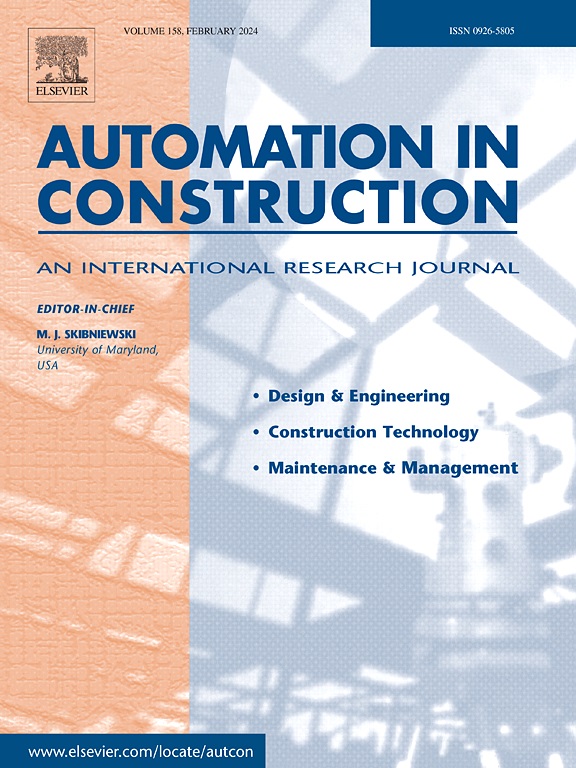Unified and interoperable digital twin models for emergency evacuation using building simulation identity cards
IF 9.6
1区 工程技术
Q1 CONSTRUCTION & BUILDING TECHNOLOGY
引用次数: 0
Abstract
Digital Twin (DT) technology is crucial for effective emergency evacuation planning in buildings, requiring specialized simulation models, from earthquake propagation to evacuation route planning. However, the lack of a unified vocabulary and standardized framework for integrating these models hinders seamless collaboration and limits holistic simulations. This fragmentation poses a significant challenge, as no single simulator can accurately capture the complex dynamics in emergency scenarios. To address this gap, this paper proposes the Building Simulation Identity Card (BSIC), a framework designed to standardize, characterize, and integrate the properties of building simulation models. BSIC facilitates the enhancement of traceability, reliability, and interoperability between DT systems in the building industry. This paper presents the application of BSIC in a case study focused on earthquake-induced evacuation in a multi-story office building. Findings demonstrate BSIC's efficacy in aligning discrete-event (DE) and continuous-time (CT) simulations, enabling synchronized data flows, accurate event handling, and minimized integration errors.

使用建筑物模拟身份证进行紧急疏散的统一和可互操作的数字孪生模型
数字孪生(DT)技术对于有效的建筑物应急疏散规划至关重要,需要专门的模拟模型,从地震传播到疏散路线规划。然而,缺乏统一的词汇表和用于集成这些模型的标准化框架阻碍了无缝协作并限制了整体模拟。这种分散带来了重大挑战,因为没有一个模拟器可以准确地捕捉紧急情况下的复杂动态。为了解决这一差距,本文提出了建筑仿真身份证(BSIC),这是一个旨在标准化、表征和集成建筑仿真模型属性的框架。BSIC有助于增强建筑行业DT系统之间的可追溯性、可靠性和互操作性。本文以某多层办公楼地震疏散为例,介绍了该方法的应用。研究结果表明,BSIC在调整离散事件(DE)和连续时间(CT)模拟、实现同步数据流、精确事件处理和最小化集成错误方面的有效性。
本文章由计算机程序翻译,如有差异,请以英文原文为准。
求助全文
约1分钟内获得全文
求助全文
来源期刊

Automation in Construction
工程技术-工程:土木
CiteScore
19.20
自引率
16.50%
发文量
563
审稿时长
8.5 months
期刊介绍:
Automation in Construction is an international journal that focuses on publishing original research papers related to the use of Information Technologies in various aspects of the construction industry. The journal covers topics such as design, engineering, construction technologies, and the maintenance and management of constructed facilities.
The scope of Automation in Construction is extensive and covers all stages of the construction life cycle. This includes initial planning and design, construction of the facility, operation and maintenance, as well as the eventual dismantling and recycling of buildings and engineering structures.
 求助内容:
求助内容: 应助结果提醒方式:
应助结果提醒方式:


